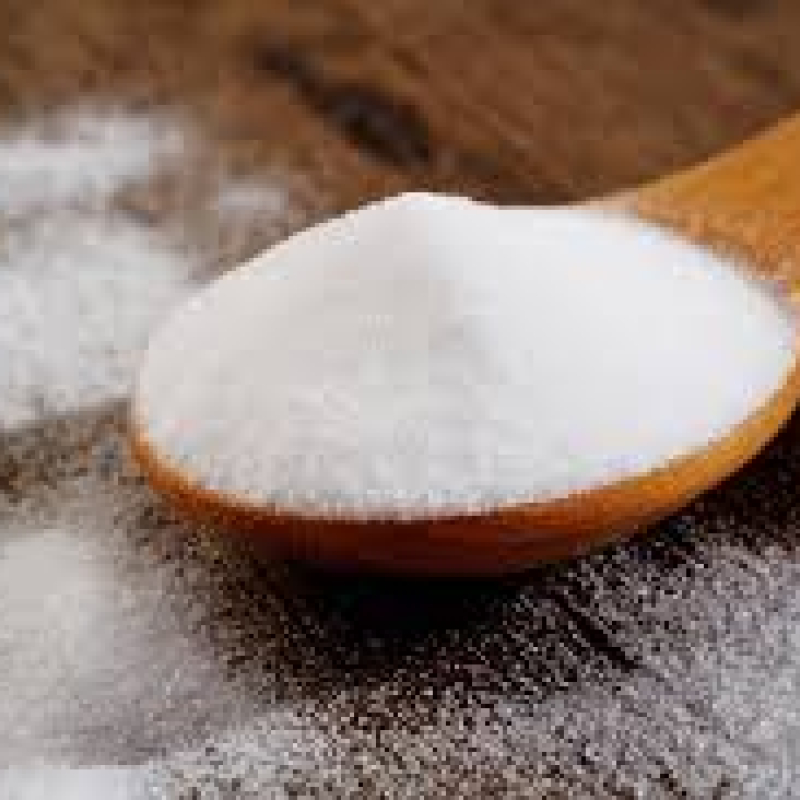Products Description of Potassium methoxideCAS#865-33-8Potassium methoxide is an alcohol salt of methanol and potassium counter ion, and is used as a strong base and catalyst for transesterification reactions, especially for the production of biodiesel. Potassium methoxide includes liquid potassium methoxide and solid potassium methoxide. The liquid product is a colorless or slightly yellow, viscous methanol solution with a potassium methoxide content of about 28%-32%; the solid product is a light yellow powder with a potassium methoxide content of about 95%-97%.
Contact Now
Products Description of Hexamethylene diacrylate CAS#13048-33-4This product is a bifunctional monomer with low skin irritation, low shrinkage and high activity.
Contact Now
Products Description of Isobornyl acrylate CAS#5888-33-5Isobornyl acrylate, abbreviated as IBOA, has attracted people's attention in research and application in recent years as a functional acrylate monomer due to its special structure and performance.
Contact Now
Products Description of Potassium peroxymonosulfate CAS#70693-62-8Potassium persulfate refers to potassium persulfate complex salt, which is an inorganic acidic oxidant. Potassium persulfate complex salt is a new type of active oxygen disinfectant. As a fifth-generation disinfectant, it has a very strong and effective non-chlorine oxidation ability. Its aqueous solution is acidic and very suitable for disinfection of various water bodies. After dissolution, it produces various highly active small molecule free radicals, active oxygen and other derivatives.
Contact Now
Products Description of Boron tribromide CAS#10294-33-4Boron tribromide is an inorganic compound, a colorless liquid at room temperature, which reacts with moisture in the air to produce smoke and boric acid and hydrogen bromide.
Contact Now
Products Description of Molybdenum disulfide CAS#1317-33-5Molybdenum disulfide, the main component of molybdenite, is a lead-gray to black solid powder. It feels greasy to the touch and has no odor. It belongs to the hexagonal or orthorhombic system, is similar to graphite, and has a metallic luster. Molybdenum disulfide is a good solid lubricant material. It has excellent lubricity for equipment under conditions of high temperature, low temperature, high load, high speed, chemical corrosion and modern ultra-vacuum.
Contact Now
Potassium Formate CAS#590-29-4Potassium formate is a useful chemical compound in the production of potassium metal and in the oil and gas industry, often in aqueous solution (alone, or mixed with cesium formate), to yield a high-density, environmentally-friendly brine that can be used a a heat transfer fluid.
Contact Now
Products Description of POTASSIUM TITANATE CAS#12030-97-6Potassium titanate is a white solid with a relative density of 3.1 and a melting point of 1515°C.
Contact Now
Products Description of Sodium MethoxideCAS#124-41-4Sodium methoxide is also called sodium methoxide. It is a kind of alcohol salt generated by methanol, with the chemical formula CH3ONa. It is a strong base commonly used in organic synthesis. Sodium methoxide is usually stored as a solution in alcohol solvents such as methanol and ethanol. It dissolves in ether to form a suspension, is sensitive to moisture, and decomposes into methanol and sodium hydroxide when it comes into contact with water: CH3ONa+H2O→CH3OH+NaOH. Sodium methoxide products come in two forms: solid and liquid.
Contact Now
Products Description of Polyisobutylene CAS#9003-27-4Potassium sulfate (K2SO4) is a kind of chemical compounds that is commonly used in agriculture. The dominant application of potassium sulfate is as a fertilizer, which is commonly applied to offer both potassium and sulfur, thus improving the quality and yield of crops growing in soils that lack an adequate supply of this essential elements. Besides, the crude potassium sulfate is sometimes employed in the production of glass.
Contact Now
Products Description of Sulfolane 99.5% CAS#126-33-0Sulfolane solvent has high solubility for aromatics, good selectivity, good thermal stability, low vapor pressure, low toxicity and no corrosion to carbon steel.
Contact Now
Products Description of Setipiprant CAS#866460-33-5White powder.Setipiprant Chemical PropertiesBoiling point 690.4±55.0 °C(Predicted)density 1.37±0.1 g/cm3(Predicted)storage temp. Store at -20°Csolubility DMSO:48.67(Max Conc. mg/mL);120.94(Max Conc. mM)DMF:50.0(Max Conc. mg/mL);124.25(Max Conc. mM)DMF:PBS (pH 7.2) (1:1):0.5(Max Conc. mg/mL);1.24(Max Conc. mM)Ethanol:3.0(Max Conc. mg/mL);7.45(Max Conc. mM)form A solidpka4.24±0.10(Predicted)Factory and Equipment ShowFast delivery timeInventory 2-3 working days New production 7-10 working days
Contact Now
Products Description of Potassium Hydrogen Phthalate CAS#877-24-7Potassium Hydrogen Phthalate is an organic compound that appears as a white crystalline powder. It is stable in the air, soluble in water, and slightly soluble in alcohol.
Contact Now
Products Description of Sulfolane CAS#126-33-0Sulfolane solvent has high solubility for aromatic hydrocarbons, good selectivity, good thermal stability, low vapor pressure, low toxicity and no corrosion to carbon steel. Therefore, sulfolane extraction technology has become the most widely used aromatic hydrocarbon in the world.
Contact Now
Products Description of Potassium bromate CAS#7758-01-2Potassium bromate is an inorganic compound with the chemical formula KBrO3. It is mainly used as an analytical reagent, oxidant, and wool bleaching agent.On October 27, 2017, the World Health Organization's International Agency for Research on Cancer published a preliminary list of carcinogens for reference.
Contact Now
Products Description of (R)-(-)-3-Carbamoymethyl-5-methylhexanoic acid CAS#181289-33-8(R)-(-)-3-(Carbamoylmethyl)-5-methylhexanoic acid is solid at room temperature and pressure, soluble in dimethyl sulfoxide, N,N-dimethylformamide and other organic solvents; it has poor solubility in ether solvents and can be used as an intermediate in chiral organic synthesis.
Contact Now
Products Description of Potassium carbonate CAS#584-08-7Potassium carbonate (chemical formula: K2CO3, English Potassium carbonate), also known as potash, has the appearance of colorless crystals or white particles, is very soluble in water, and its solution is strongly alkaline. When its saturated aqueous solution is cooled, a glassy monoclinic hydrate 2K2CO3·3H2O crystal is separated, with a density of 2.043, and loses crystal water at 100°C. It is insoluble in ethanol, acetone and ether.
Contact Now
Products Description of Potassium Hydroxide CAS#1310-58-3 Potassium hydroxide is an inorganic compound with the chemical formula KOH. It is a common inorganic base with strong alkalinity. The pH of 0.1 mol/L solution is 13.5. It is soluble in water and ethanol, slightly soluble in ether, and easily absorbs moisture in the air to become deliquescent. It absorbs carbon dioxide to form potassium carbonate.
Contact Now
Products Description of DIMETHYL DICARBONATE CAS#4525-33-1Dimethyldicarbonate (DMDC), also known as Vigorin, is a fruit juice beverage preservative permitted for use in my country's food additives standards (INS No. 242). At room temperature or even low temperature, DMDC has a strong killing ability against many contaminating bacteria in fruit juice beverages. Its antiseptic effect is closely related to the modification and inactivation of key enzyme proteins in the bacteria by DMDC.
Contact Now
potassium methylsilanetriolate Chemical PropertiesBoiling point 112℃[at 101 325 Pa]density 1.388[at 20℃]Specific Gravity1.29Hydrolytic Sensitivity0: forms stable aqueous solutionsLogP0.780 (est)EPA Substance Registry SystemSilanetriol, methyl-, potassium salt (31795-24-1)Product Application of Potassium methyl siliconate CAS#31795-24-1Methylsilanetriol potassium salt is mainly used as a surface treatment agent and catalyst. It can be used to improve the wettability, water resistance and wear resistance of materials.
Contact Now
Potassium clavulanate CAS# 61177-45-5Product Overview:Potassium Clavulanate, also known as CLAVULANIC ACID POTASSIUM SALT with the CAS#61177-45-5, is a potent β-lactamase inhibitor that is revolutionizing the way we combat bacterial infections in the industrial pharmaceutical sector. As a key component in the synthesis of advanced antibiotics, our Cellulose Clavulanate is designed to meet the rigorous demands of modern manufacturing processes.Market Relevance:In the competitive landscape of the pharmaceutical industry, the need for effective antibacterial agents is paramount.
Contact Now
Products Description of DMPT CAS#4337-33-1Dimethyl-beta-propiothetin, English name: Dimethyl-beta-propiothetin,abbreviated as: DMPT, it exists in two forms: one is dimethyl-beta-propiothetin hydrochloride (Dimethyl-beta-propiothetin hydrochloride), CAS: 4337-33-1, molecular formula C5H11SO2Cl, molecular weight 170.66.The other is dimethyl-beta-propiothetin hydrobromide (Dimethyl-beta-propiothetin hydrobromide), CAS: 20986-22-5.
Contact Now
Products Description of Potassium methyl siliconate CAS#31795-24-1potassium methylsilanetriolate Chemical PropertiesBoiling point 112℃[at 101 325 Pa]density 1.388[at 20℃]Specific Gravity1.29Hydrolytic Sensitivity0: forms stable aqueous solutionsLogP0.780 (est)EPA Substance Registry SystemSilanetriol, methyl-, potassium salt (31795-24-1)Product Application of Potassium methyl siliconate CAS#31795-24-1Methylsilanetriol potassium salt is mainly used as surface treatment agent and catalyst.
Contact Now
Products Description of Ammonium bicarbonate CAS#1066-33-7Ammonium bicarbonate(1066-33-7) is a commonly used reagent for industrial and research procedures. Ammonium bicarbonate is volatile in solution and releases ammonia and CO2. This property makes ammonium bicarbonate a good buffer for such applications as lyophilization and matrix assisted laser desorption.
Contact Now

































